Brain Region- and Age-Dependent 5-Hydroxymethylcytosine Activity in the Non-Human Primate
- PMID: 35912074
- PMCID: PMC9326314
- DOI: 10.3389/fnagi.2022.934224
Brain Region- and Age-Dependent 5-Hydroxymethylcytosine Activity in the Non-Human Primate
Abstract
Because of the difficulty in collecting fresh brains of humans at different ages, it remains unknown how epigenetic regulation occurs in the primate brains during aging. In the present study, we examined the genomic distribution of 5hmC, an indicator of DNA methylation, in the brain regions of non-human primates (rhesus monkey) at the ages of 2 (juvenile), 8 (young adult), and 17 (old) years. We found that genomic 5hmC distribution was accumulated in the monkey brain as age increased and displayed unique patterns in the cerebellum and striatum in an age-dependent manner. We also observed a correlation between differentially hydroxymethylated regions (DhMRs) and genes that contribute to brain region-related functions and diseases. Our studies revealed, for the first time, the brain-region and age-dependent 5hmC modifications in the non-human primate and the association of these 5hmC modifications with brain region-specific function and potentially aging-related brain diseases.
Keywords: aging; brain region; epigenetics; neurodegenerative diseases; non-human primates.
Copyright © 2022 Xu, Zhong, Wei, Li, Xie, Xie, Chen, Guo, Yin, Li, Zeng, Li and Lin.
Conflict of interest statement
The authors declare that the research was conducted in the absence of any commercial or financial relationships that could be construed as a potential conflict of interest.
Figures

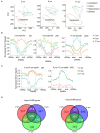
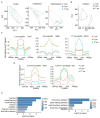
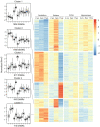
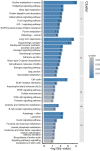
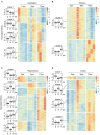

Similar articles
-
Dynamic 5-Hydroxymethylcytosine Change: Implication for Aging of Non-Human Primate Brain.Epigenomes. 2022 Nov 28;6(4):41. doi: 10.3390/epigenomes6040041. Epigenomes. 2022. PMID: 36547250 Free PMC article.
-
DNA methylation confers a cerebellum-specific identity in non-human primates.Zool Res. 2025 Mar 18;46(2):414-428. doi: 10.24272/j.issn.2095-8137.2024.325. Zool Res. 2025. PMID: 40091535 Free PMC article.
-
Alterations in the Genomic Distribution of 5hmC in In Vivo Aged Human Skin Fibroblasts.Int J Mol Sci. 2020 Dec 23;22(1):78. doi: 10.3390/ijms22010078. Int J Mol Sci. 2020. PMID: 33374812 Free PMC article.
-
The role of 5-hydroxymethylcytosine in development, aging and age-related diseases.Ageing Res Rev. 2017 Aug;37:28-38. doi: 10.1016/j.arr.2017.05.002. Epub 2017 May 10. Ageing Res Rev. 2017. PMID: 28499883 Review.
-
TET Enzymes and 5-Hydroxymethylcytosine in Neural Progenitor Cell Biology and Neurodevelopment.Front Cell Dev Biol. 2021 Feb 18;9:645335. doi: 10.3389/fcell.2021.645335. eCollection 2021. Front Cell Dev Biol. 2021. PMID: 33681230 Free PMC article. Review.
Cited by
-
Dynamic 5-Hydroxymethylcytosine Change: Implication for Aging of Non-Human Primate Brain.Epigenomes. 2022 Nov 28;6(4):41. doi: 10.3390/epigenomes6040041. Epigenomes. 2022. PMID: 36547250 Free PMC article.
-
Dynamic Regulation of DNA Methylation and Brain Functions.Biology (Basel). 2023 Jan 18;12(2):152. doi: 10.3390/biology12020152. Biology (Basel). 2023. PMID: 36829430 Free PMC article. Review.
-
Distinctive Patterns of 5-Methylcytosine and 5-Hydroxymethylcytosine in Schizophrenia.Int J Mol Sci. 2024 Jan 4;25(1):636. doi: 10.3390/ijms25010636. Int J Mol Sci. 2024. PMID: 38203806 Free PMC article. Review.
-
DNA methylation confers a cerebellum-specific identity in non-human primates.Zool Res. 2025 Mar 18;46(2):414-428. doi: 10.24272/j.issn.2095-8137.2024.325. Zool Res. 2025. PMID: 40091535 Free PMC article.
References
LinkOut - more resources
Full Text Sources

